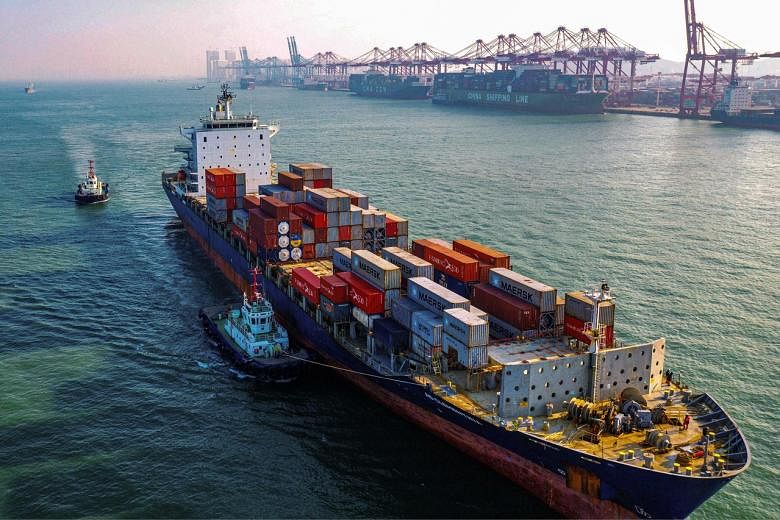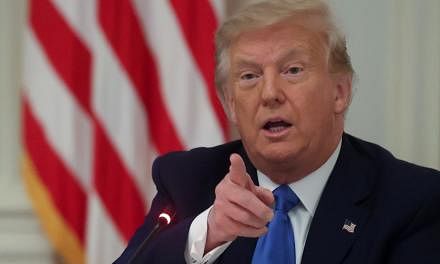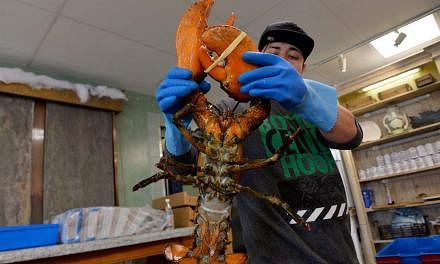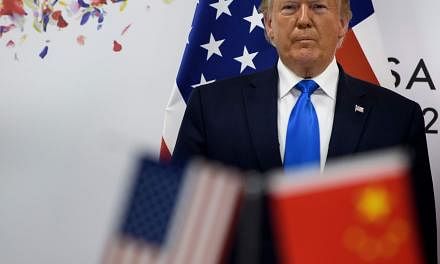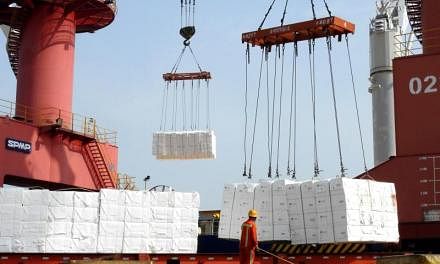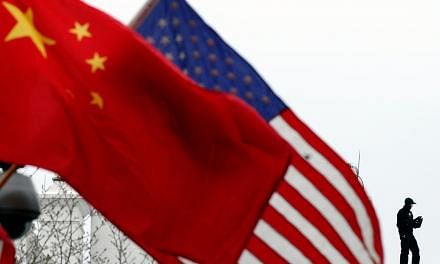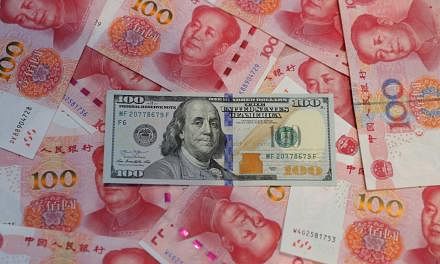WASHINGTON - China's trade deal pledge to buy an additional US$200 billion ($269 billion) of American goods and services is unrealistic and may lead to unintended consequences, a trade economist said in a commentary published on Tuesday (Jan 21).
As pledged in the United States-China phase one deal signed on Jan 15, China is to ramp up its purchases of America's manufactured goods, agricultural products, energy and services over two years - US$77 billion more than in 2017 in the first year, and US$123 billion more than in 2017 in the second year.
But these targets are such a big increase over current US-China trade volumes, and must be made in such a short time, that meeting and sustaining them will be a challenge, said Peterson Institute for International Economics senior fellow Chad Bown.
"That matters, because with unrealistic export targets, the deal may be doomed from the start. Other beneficial aspects of Chinese commitments in the agreement could be put in peril.
"Even worse, hostilities might renew, leading to a re-escalation of trade tensions currently on hold," he said in the analysis published on the Washington-based think tank's website.
The unrealistic nature of China's purchase commitments has been a common criticism of the trade deal, especially from China watchers and trade experts who call for US President Donald Trump to focus more on restructuring China's market economy and ending its unfair trade practices rather than shrinking the US-China trade deficit.
Dr Bown calculated that if fulfilled, the deal would result in a 92 per cent increase - almost a doubling - of US exports to China of the products specified in the trade deal, between 2017 and 2021.
This means that US exports to China would have to grow by 18 per cent each year from 2017 to 2021. But even when China's economy was booming from 2000 to 2007, US exports to China grew by 21 per cent a year in that period, Dr Bown said.
"With China's economy currently growing much more slowly, for reasons unrelated to the trade war, sustaining 18 per cent annual export growth over a four-year period would be a challenge," he wrote.
Worse, US exports to China are already an estimated US$20 billion lower than in 2017, before the trade war began, widening a gap that China is already hard-pressed to close.
Another obstacle to a US export boom to China is the lingering uncertainty caused by the trade war, which may cause US farmers to hold back on planting more seeds and buying more equipment.
Some Chinese buyers have also already severed their business relationships with American suppliers and will not return, said Dr Bown.
To try and meet its targets, China could choose to buy certain goods from the US rather than from other countries - for instance, importing soya beans from the US rather than Brazil and Argentina, or sorghum, beef and corn from American farmers rather than Australian, Vietnamese or Thai ones.
But this sort of managed trade will create problems for the global trading system, he argued.
"It incentivises Beijing to shift purchases away from other foreign suppliers and toward the United States to overcome the shortfalls anticipated," said Dr Bown. "Trading partners are right to be wary."
Any Chinese shortfalls may not become obvious until after the US presidential election in November, because the official US trade statistics for the year will not be available until March 2021, said Dr Bown.
Should China not meet the targets, the US is allowed to retaliate by imposing tariffs under the trade deal, but China can also pull out of the deal if it is unhappy with how the US adjudicates their disputes.
"Anyone who cares about establishing a stable and productive relationship between the world's two largest economies should be concerned," said Dr Bown.
